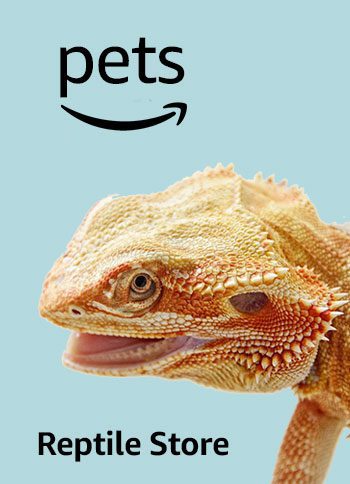Bearded dragons, with their distinctive appearance and charming personalities, have become increasingly popular as pets. These reptiles make wonderful companions, but like any pet, they require proper care to thrive in captivity. Whether you're a first-time owner or a seasoned reptile enthusiast, these 15 bearded dragon care tips will help ensure your scaly friend lives a happy and healthy life.
1. Proper Enclosure Setup
Creating the right environment is crucial for your bearded dragon’s well-being. Ensure the enclosure is spacious enough to allow for movement, with a minimum size of 40 gallons for adults. A well-ventilated terrarium with secure lids is essential. Include branches and rocks for climbing, a basking spot and hiding places for a more enriched environment.
2. Optimal Temperature Gradient
Bearded dragons are cold-blooded reptiles that require a temperature gradient in their enclosure. Provide a basking spot with a temperature between 95–105°F (35-40°C) at one end and a cooler area around 75–85°F (24-29°C) at the other. This setup allows them to regulate their body temperature by moving between the warm and cool zones.
3. UVB Lighting

Bearded dragons need access to natural sunlight or UVB lighting for proper calcium metabolism and overall health. Use a UVB bulb to provide the necessary rays for at least 10–12 hours a day. Ensure the UVB bulb is replaced every 6–12 months to maintain its effectiveness.
4. Balanced Diet
A well-balanced diet is crucial for the health of your bearded dragon. Their diet should consist of a variety of insects such as crickets, mealworms and Dubia roaches, as well as a mix of vegetables and fruits. Calcium and vitamin supplements should be dusted on their food regularly to prevent nutritional deficiencies.
5. Hydration
While bearded dragons can get some moisture from their food, they also need a water source for hydration. Provide a shallow dish of fresh water in the enclosure and mist the dragon and their habitat regularly. Ensure the water is changed daily to maintain cleanliness.
6. Regular Handling
Bearded dragons are known for their gentle and sociable nature. Regular, gentle handling helps them become accustomed to human interaction and reduces stress. Start with short sessions and gradually increase the duration to build trust. Always approach them calmly to avoid startling them.
7. Proper Substrate
Choose a substrate that promotes cleanliness and is safe for your bearded dragon. Options include reptile carpet, newspaper or ceramic tiles. Avoid loose substrates like sand, as they can lead to impaction if ingested.
8. Regular Veterinary Check-Ups
Routine veterinary check-ups are essential to catch any potential health issues early. Find a reptile-savvy veterinarian who can conduct thorough examinations and provide guidance on your bearded dragon’s specific needs.
9. Observation and Monitoring
Keep a close eye on your bearded dragon’s behavior, appetite and waste. Any sudden changes may indicate health concerns. Regular monitoring allows you to address issues promptly, ensuring a longer and healthier life for your pet.
10. Appropriate Handling of Shedding
Like many reptiles, bearded dragons shed their skin regularly. Ensure proper humidity levels during shedding to facilitate the process. If your dragon has difficulty shedding, provide a shallow bath to help soften the skin and avoid peeling it off forcefully.
11. Maintain Cleanliness
A clean environment is essential for your bearded dragon’s health. Regularly clean and disinfect the enclosure, remove uneaten food and keep the water dish clean. Maintaining a hygienic habitat helps prevent the growth of harmful bacteria.
12. Provide Enrichment Activities
Bearded dragons benefit from mental and physical stimulation. Provide toys, branches and objects to climb on. Rotating these items regularly keeps their environment interesting and prevents boredom.
13. Respect Their Resting Time
While bearded dragons are diurnal and generally active during the day, they also need ample rest. Ensure that the enclosure is in a quiet location during the evening, providing a dark and peaceful space for your pet to sleep.
14. Quarantine for New Additions
If you have multiple bearded dragons or are introducing a new reptile to your collection, quarantine is crucial. Separate new additions for a period to monitor their health and prevent the spread of potential diseases.
15. Stay Informed and Educated
Finally, stay informed about the latest research and developments in bearded dragon care. LifeofReptiles is a blog dedicated to reptiles and provides valuable content. Join online communities and forums and consult reputable sources to enhance your knowledge and provide the best care possible for your scaly companion.
In conclusion, proper care for your bearded dragon involves creating a suitable environment, maintaining a balanced diet, regular veterinary check-ups and understanding their unique needs. By following these 15 tips, you’ll be well on your way to ensuring a happy and healthy life for your bearded dragon.






